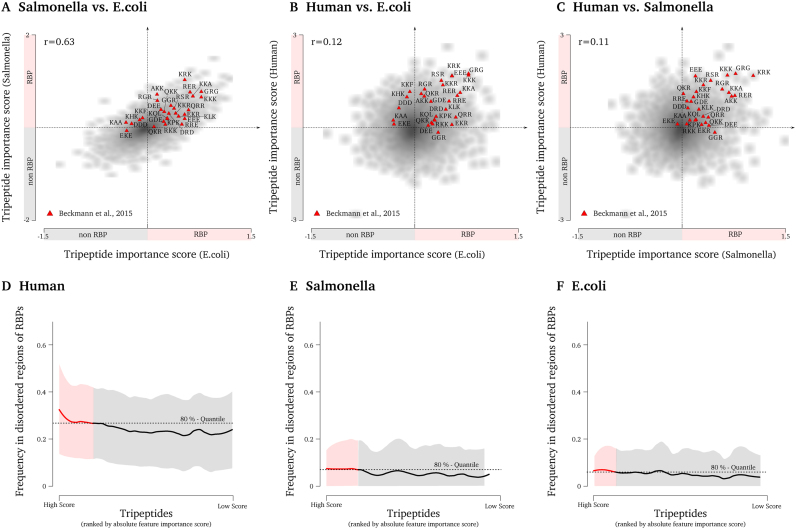Figure 4.
TriPepSVM classifiers apply highly conserved tripeptides that are enriched in structurally disordered regions of RBPs in human. A, B, C show tripeptides (red triangles) identified by Beckmann et al. (7) as conserved in eukaryotic RBPs and expanded from yeast to human with their corresponding weights for A Salmonella vs. E. coli, B human vs. E. coli and C human vs. Salmonella. Most of the conserved tripeptides from (7) harbor positive weights not only in human but also in Salmonella and E. coli, and are therefore important in characterizing RNA-binders in human and bacteria. We report pearson’s correlation coefficient for all pairwise comparisons and show high correlation (r = 0.63) between the feature weights extracted from the classifiers trained on bacteria. D, E, F show the structural disorder fraction of each tripeptide ranked by the absolute feature importance score. The resulting curve is smoothed using LOESS regression (span = 0.2) where the shading shows the standard deviation. The dashed line marks the value of the 80%-quantile of the smooth LOESS regression values. The frequency indicating how often a tripeptide is observed in the structural disordered part of an RBP increases with the feature importance score in D human, but not in E Salmonella and F E. coli.

